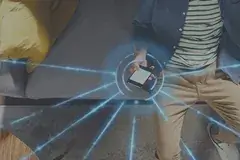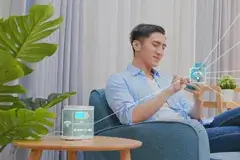![]() Customers rely on smart home product design to provide safety and security while enabling convenience with a healthy dose of fun and amazement. While consumers demand simplicity, smart home products — by their nature — are complex systems requiring detailed knowledge of communications protocols, security standards, electronics and application development.
Customers rely on smart home product design to provide safety and security while enabling convenience with a healthy dose of fun and amazement. While consumers demand simplicity, smart home products — by their nature — are complex systems requiring detailed knowledge of communications protocols, security standards, electronics and application development.
Leveraging extensive experience with smart device design and smart home app development, Cardinal Peak empowers clients with the ability to quickly build smart home products that seamlessly integrate with mobile applications and cloud systems. As many smart home products are high volume, it is crucial to minimize both the device BOM and the long-term cloud costs. Our team understands those requirements and possesses the skills and experience necessary to develop smart home devices that can thrive in today’s networked ecosystems.
IoT and Smart Home Product Design Services
With over 2,000 dedicated IoT specialized resources and another 900 AI/ML experts, Cardinal Peak accelerates your IoT product journey. Our end-to-end design services coupled with our managed services and sustaining engineering provide you with complete IoT product life cycle support. As a leading electronic and digital product engineering firm, Cardinal Peak leverages deep experience in hardware, embedded software, cloud, end-user applications, such as mobile, and quality assurance to develop connected IoT products in multiple markets, including audio, automotive, video, security and healthcare.
Product Ideation
Developing differentiated products that disrupt markets
IoT Engineering
Designing products that integrate with mobile applications and cloud systems
Voice
Experts at embedding voice processing capabilities in connected devices
Quality Assurance
From black box testing to test automation and manufacturing support
Managed Services
IoT fleet management, network management, and tier 2 support
Sustaining Engineering
Cost effective sustaining engineering to keep your IoT products current and operating as underlying services change
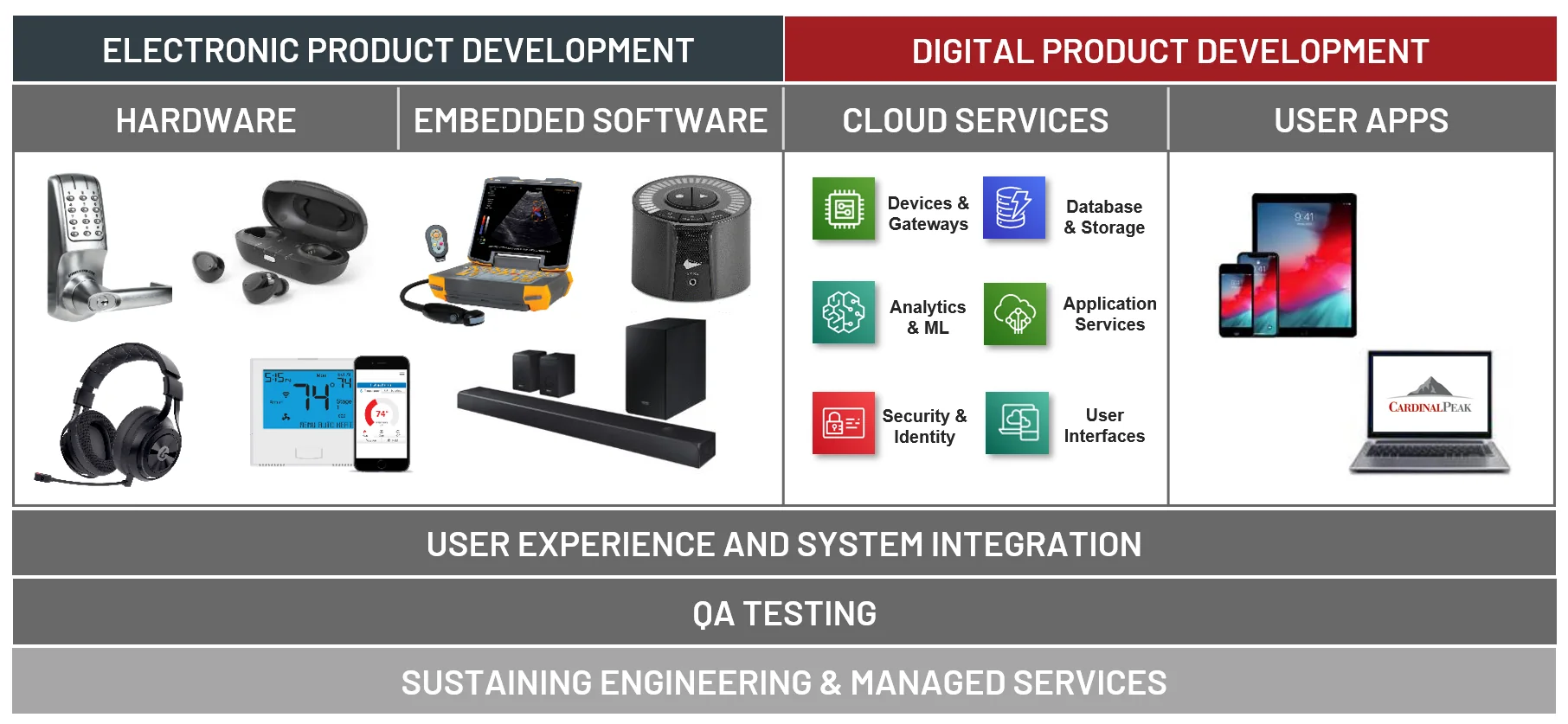
The Demand for Smart Home Device Design Continues to Grow
Estimated to reach $537 billion by 2030, the global smart home engineering market has firmly taken hold. Between 2023 and 2030, the compound annual growth rate is expected to be more than 27%. The following list, from largest to smallest segment, provides a description of the current subcategories in the smart home market.
Consumer Electronics | Lighting & Controls | Safety & Security | Climate Control | Energy & Water Control |
|---|---|---|---|---|
| Smart speakers | Light bulbs | Garage door operators | Smart ceiling fans | Irrigation panels |
| Home appliances | Plugs | Smoke detectors | Radiator valves | Water leak sensors |
| Health & fitness wearables | Switches | Smart door locks | Thermostats | Air quality sensors |
| Smart TVs | Blinds/shades | Security cameras | Room air conditioners | Water meters |
| Bluetooth trackers | Outdoor lighting | Video doorbells | Air purifiers | Flood detectors |
| Vacuums | Automated systems & hubs | Intruder alarm sensors | Humidifiers | Home energy monitors |
While smart device engineering has flourished in recent years, the market is still deeply fragmented, leading to consumer confusion and frustration. Looking back to 2016 (the year Amazon’s Echo Dot was released), smart product design was dominated by dozens of single-purpose products and apps. As consumers increasingly adopted Echo Dot and other voice-operated devices, integration began, enabling users to control all their devices (from multiple vendors) through a single interface. The integration trend has grown as voice hubs started including displays. Connected devices appear integrated because of this common control point, but, in practice, the devices do not communicate or interact with one another.
Smart Home Product Design Case Studies
As a leading smart home product design company, Cardinal Peak provides innovative smart product design and smart device engineering services. Check out the projects below to better understand our smart home engineering expertise.
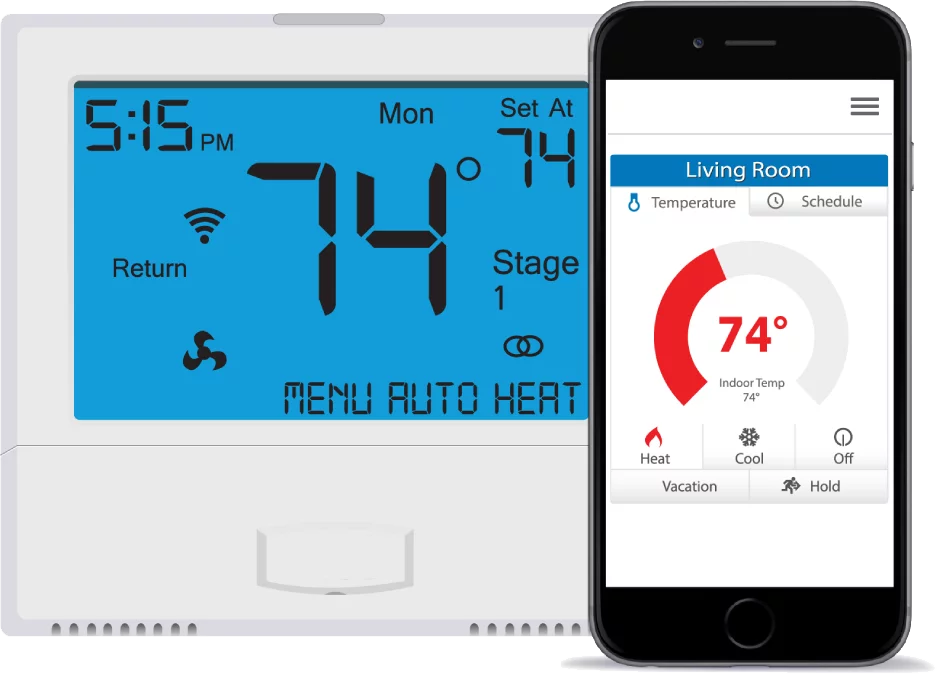
Our Smart Home Product Development
As a leading smart home product design company, we understand smart device engineering. On this webpage, our experts discuss some IoT products we’ve designed and answer FAQs to help you develop your smart home product.
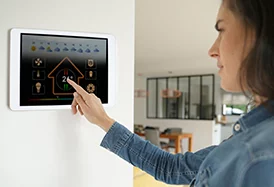
Voice Enabled Smart Home Automation
Smart home engineering makes it easier than ever for consumers to control their at-home lives — using just their voices. This smart product design case study highlights our audio, voice and signal processing expertise.
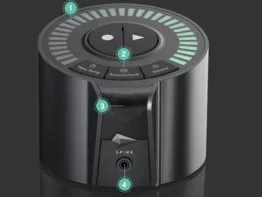
Designing a Smart Portable Recording Studio
A favorite smart device design project of ours involved the development of a recording system where technology didn’t get in the way of creative moments. Learn why iZotope leveraged our smart home product design services.
As a leading smart home product design company, we understand smart device engineering. On this webpage, our experts discuss some IoT products we’ve designed and answer FAQs to help you develop your smart home product.
Smart home engineering makes it easier than ever for consumers to control their at-home lives — using just their voices. This smart product design case study highlights our audio, voice and signal processing expertise.
A favorite smart device design project of ours involved the development of a recording system where technology didn’t get in the way of creative moments. Learn why iZotope leveraged our smart home product design services.
Smart Home Engineering Resources
Are you in search of more detailed information on the smart device design process, an overview of the different technologies involved in smart product design or how to design and develop connected smart home technologies? Dive into the following webpages for additional information to help you drive innovative smart device engineering.
What are the Challenges of Smart Device Design?
The challenges going forward for any smart home product design company releasing new products or other brands entering the smart home market are:
- Providing deeper integration so that connected products can satisfy multiple use cases.
- Placing bets on which standards will gain traction in the market and which will no longer need to be supported.
With the dizzying array of competing communications standards, such as Zigbee, Z-Wave, Wi-Fi, BLE and the various ecosystems from Amazon, Google, Apple, Samsung and Comcast, along with the promise of Matter smart home standard, an open-source IoT compatibility standard that aims to unite the smart home’s disparate devices and ecosystems and make everything work together, it can be difficult to chart your course. Compatibility choices come with different costs as each standard your device supports costs development dollars and often leads to having to support more SKUs in the market.
Fortunately, Cardinal Peak has been navigating the smart home product design waters for years and can help you chart the best course. We have worked on smart home products in all of the subcategories listed above. Check out some of our smart device engineering case studies below and connect with us to discuss your next smart home project.
Smart Home Product Design Considerations
The market for smart home products continues to be fragmented. Tech giants like Amazon, Google, Samsung and Apple have all helped improve the end-user experience by making the myriad of single-purpose apps obsolete, but in doing so, they have isolated manufacturers from their customers as the consumer no longer interacts with a manufacturer-branded app. This level of fragmentation makes it increasingly difficult for companies focused on smart product design to develop and maintain brand loyalty and differentiate on anything other than price.
Additionally, IoT platform-as-a-service companies like Tuya, Ayla Networks, Thingworx and others have further commoditized the smart home engineering market by making connected devices using their platforms all fit within narrow use cases. In trying to lower the IoT product development and smart home app development cost, these platforms have made product differentiation increasingly difficult.
Not to worry, these are the same smart device engineering challenges that Cardinal Peak has faced with other customers — and we can help you successfully navigate these concerns as well. Considering every smart home product design is different, we are here to discuss your unique value proposition and develop differentiated devices that delight your customers.
Our end-to-end design capability — including hardware, embedded software, the cloud and user apps — is all under one roof, so we can quickly and efficiently help you reduce both cost and time to market for your value-added product.
Smart Product Design FAQs
What is a Smart Home Device?
Smart home is a category of Internet of Things (IoT) products that are specifically designed for use in the home. Common examples of smart home devices include thermostats, Wi-Fi or BLE door locks, lighting controls, outlets, etc. In addition to the connected devices, smart homes often include hubs or gateways that allow products using a variety of protocols, such as Zigbee, BLE, 6LoWPAN and others, to connect. Increasingly popular in smart home control are smart speakers, such as the Amazon Echo or Google Home products, which allow homeowners to control smart devices using voice systems engineering. Primary use cases for smart homes include 1) home automation, 2) home security and 3) monitoring while away.
How Long Does it Take to Design a Smart Device?
For a ground-up design of a new smart home product (not a white-labeled product), a reasonable expectation for smart device design and testing is six to nine months. This includes the industrial design for the package, including molds. It also assumes the development of a new printed circuit board and the embedded software necessary to run the device, communicate with the cloud and perform over-the-air software updates. Much of the electrical design happens in parallel to the mechanical design as does smart home app development and the design of any cloud services supporting the device. Included in the schedule is time for alpha and beta testing of the end-to-end product. For products that are leveraging an existing product design, timeframes can be greatly compressed.
What are the Steps in Smart Device Design?
The first step in all smart home product design is envisioning the value proposition of the product (ideation) and documenting the features that need to be implemented (the requirements). For smart home products, this step needs to consider compatibility with other smart home products, such as Alexa or one of the other voice assistants. Leveraging existing infrastructure can greatly reduce your development cost and speed the schedule at the expense of limiting your market. For example, developing a device that is exclusively controlled through Alexa eliminates the need to develop an app, but only customers that use Alexa can use your product.
When it comes to smart home engineering, the first step is to describe the data that needs to be collected, processed and displayed by the device so that the device-to-cloud and the cloud-to-app interfaces can be described. Given a good interface description, the development of the device, cloud application and end-user app can proceed in parallel as engineers work to the API (application programming interface), which has likely been mocked up with a test harness. As features are implemented end to end, the smart home device undergoes regular QA testing for each new feature, as well as regression testing for previously developed features. When the smart device design and development is complete, testing expands to alpha testing (“friends and family”) then beta testing (small set of customers), during which any manufacturing test and configuration tools are prepared. Finally, the product is released. As widespread user data comes back and the marketing team sees the features that resonate with customers, functionality is added or tweaked and pushed out through OTA updates. Read more about our process to initiate smart home product design.
Smart Home Product Design Related Articles
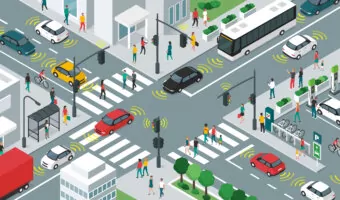
How Connected Device Engineering Advances Smart Homes and Cities
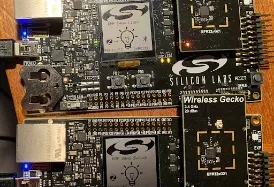
Smart Home Lighting With Multiprotocol Connectivity
Ever wanted to turn your lights on/off without using the actual switch? Read this tutorial blog post to discover how you can build a smart home lighting device that can be controlled from your smartphone.
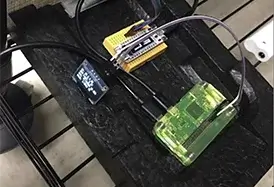
Overcoming IoT & Smart Home Device Testing Challenges
Successful IoT testing ensures an optimal user experience, as well as efficient smart product design. In this blog post, our expert highlights various smart product testing challenges and considerations.
Ever wanted to turn your lights on/off without using the actual switch? Read this tutorial blog post to discover how you can build a smart home lighting device that can be controlled from your smartphone.
Successful IoT testing ensures an optimal user experience, as well as efficient smart product design. In this blog post, our expert highlights various smart product testing challenges and considerations.
Read Our Guide to End-to-End IoT Product Design
 Download our whitepaper on end-to-end IoT product design to understand options and questions to consider for your connected device development. Learn about the IoT development process, typical IoT technologies, cloud services that can support your device, how to plan your mobile app development, security considerations, and more.
Download our whitepaper on end-to-end IoT product design to understand options and questions to consider for your connected device development. Learn about the IoT development process, typical IoT technologies, cloud services that can support your device, how to plan your mobile app development, security considerations, and more.
See more information on our Guide to End-to-End IoT Product Design.

